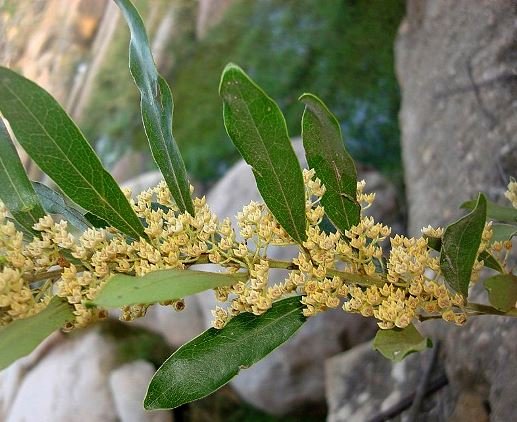Euclea

Euclea is a genus of trees, shrubs and a few subshrubs and suffrutices in the Ebenaceae or ebony family.
The simple leaves are opposite, sub-opposite, whorled or spirally arranged. The blades are leathery and there are no stipules.
All the eucleas are dioecious, i.e. male and female flowers growing on separate trees. The flowers grow in axillary racemes, in clusters differently formed or solitary. The calyces are persistent and four- or five-lobed, not enlarging during the fruiting stage. The corolla is also lobed, either shortly on the mouth or deeply in a bell-shape.
Male flowers grow from ten to thirty stamens, some female flowers having vestigial male components in the form of sterile staminodes. The filaments are free or variously joined in the different species. Female flowers have ovaries comprising two to six locules and one or two styles, the ovaries positioned on fringed, fleshy discs.
The fruit is a spherical berry bearing one, sometimes up to three seeds. The seeds are divided into three parts by a curved line, somewhat like those on a tennis ball.
Fifteen of the twenty (all African) Euclea species grow in South Africa. Some of them, Euclea racemosa, E. natalensis and E. crispa have differentiated into recognised subspecies.
The plant in picture may be E. schimperi photographed in Limpopo (Leistner, (Ed.), 2000; Coates Palgrave, 2002).

